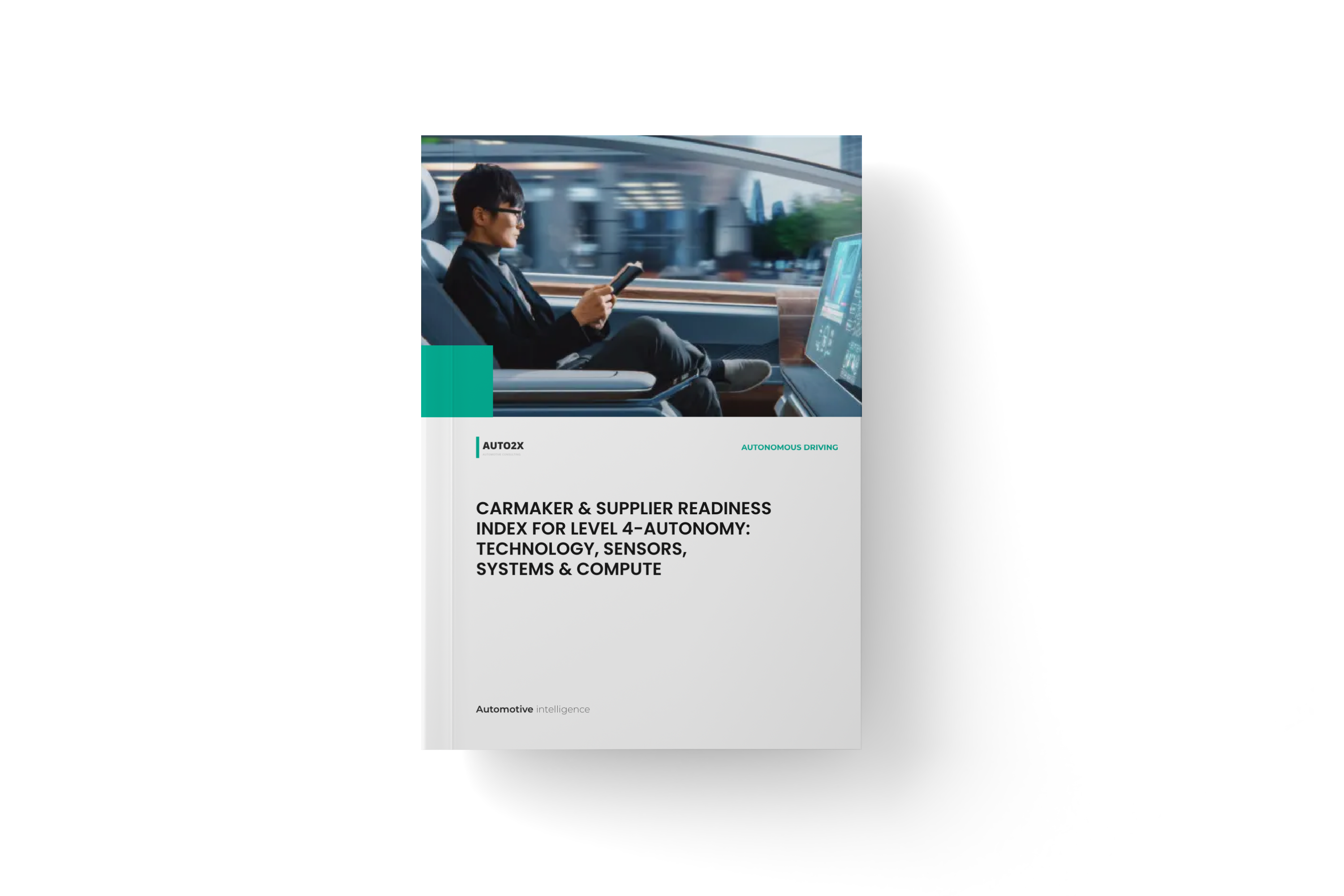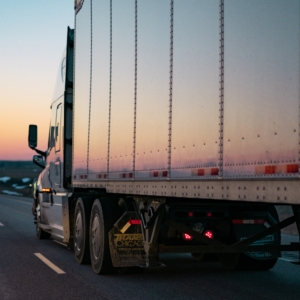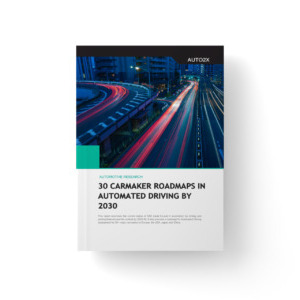Description
This report delivers
- An assessment of the readiness level of players, from carmakers to suppliers;
- Strategies of key competitors to launch Level 4 Autonomous Driving in cars
- Technology Consortiums to build L4 robotaxis: APTIV, WAYMO, BOSCH, BMW?
- The state of the art in technology building blocks: sensors, architecture, SW, other
- The business case
To assess the readiness of suppliers we quantify their technological competitiveness, their strategy execution and their market positioning
In the 2020s the vehicle’s software value will exceed that of hardware as carmakers shift to more common platforms to achieve cost savings and existing players are forced to shift away from vertically integrated, asset-heavy business models to compete with new entrants. Software will be crucial for product differentiation such as new features, content, and new personalized experiences.
To succeed in the Autonomous Driving race, suppliers need to offer a competitive portfolio of L4 features (Highway, City, Parking), sensors (e.g. imaging radar, solid-state lidar), and software. But they also need to develop a strong network of partnerships and investments to scale and capture significant market share.
There are a number of criteria crucial for L4 Autonomy including: Next-gen sensors (e.g. imaging radar, solid-state lidar), Features (Highway, City, Parking), Architecture, SW Stack, Validation-Verification and other.
- Features: Bosch is developing L4-Highway features but we assess that other Tier-1s, such as APTIV, have stronger capabilities at the moment in this feature.
- Sensors: Bosch has a strong position in ADAS but needs further innovation for L3-4. The addition of Lidar and supercomputers in its portfolio is in the right direction but the company faces competition for Lidar from other Tier 1s, such as Valeo for Mercedes-Benz’s L3.
- Validation: Bosch led a research project called ‘VVM’, short for verification and validation methods of Level 4 and Level 5 autonomous vehicles, launched in 11 July 2019 with a duration of 4 years. Under the leadership of two consortium leaders Bosch and BMW, with funding from the Federal Ministry for Economic Affairs and Energy, 23 well-known industry & research partners will jointly develop legally viable, time-efficient and cost-effective verification and validation methods. Using the example of complex urban crossroads application, VVM will be developing essential innovations combining virtual and real-life tests.
- Robotaxis: Daimler – Bosch had a consortium for L4 robotaxis in urban environments that ended in Aug’21. Bosch is the sensor supplier, i.e. is developing the sensors, computing platforms as part of its partnership with Daimler who is the lead partner and developer of the SW. Bosch is developing SW on their own for L3+ (not any other L4 as of today).
How could Chinese suppliers are Tech Giants disrupt major Tier-1s?
Traditional ADAS suppliers still maintain the lion’s share in ADAS revenues due to their portfolio of radars and cameras, but they face competition from US, Chinese and other Tech giants who are marching into automotive to monetize emerging business models.
We have identified a number of opportunities for Tech Companies to enter or disrupt the existing supply chain.
- Next-gen Perception Hardware for Autonomous Driving: imaging radars, advanced cameras and lidar for L3-5 Autonomous Driving
- Software: e.g. for Peta-ops chips for Autonomous Driving
- AI: From AI for AD to AI for HMI such as in-car AI assistants
- Data-based Mobility Business models such as in-car e-commerce
- Connectivity: 5G, Connected Infrastructure and Smart Cities
- Autonomous Shared Mobility: AMoD, autonomous deliveries
Strategy: investments and partnerships to make their vision a reality
Autonomous Driving start-up funding is in decline, but big deals in Level 4 Software development are still happening
Early-stage start-ups working on autonomous vehicles secured $6 Billion funding in the 2-year period between Q1 2021 and Q1 2023, from $3.5 Billion in 2021 to $2 Billion in 2022 and just $90 Million in Q1 2023.
Auto2x
The Top-3 automotive start-up funding rounds in Autonomous Driving / Autonomous Vehicles came from Chinese start-ups working on Level 4 autonomy which provides un-supervised driving.
- Chinese autonomous driving start-up Deeproute.ai raised $300 Million in Series B in September 2021 to expand its Level-4 Autonomous Driving for Robotaxis and Trucks to urban logistics and fleet operation;
- Didi Woya secured $300 Million for L4 Autonomous Driving Robotaxis in a Series B round in July 2021. In April 2023, Didi Global announced its intention to develop its own robotaxis by 2025.
- WeRide raised $300 Million in Series C funding for its L4 Autonomous Driving Robotaxis in June 2021.
European Autonomous Driving start-ups secured $0.71 Billion funding since 2021, across 87 rounds.
- Wayve, a UK start-up working on Level 4 Autonomous Driving Software), raised $200 million in Series B from investors including Microsoft.
- Einride (Level 4 Autonomous Trucks),
- Vay (Tele-operation),
- EasyMile (Level 4 Autonomous Driving Software) and
- Oxbotica (Level 4 Autonomous Driving Software)
Half of the early-stage funding raised by European start-ups is supporting the development of Level 4 Autonomous Driving Software, while 17% is for Autonomous Trucks
Auto2x analysis
Table of Contents
- EXECUTIVE SUMMARY:
- Supplier Readiness level: strategy, tech, market, financials
- Level 4 outlook
- The business case
- LEVEL 4 MARKET FORECAST: Who, when, what, how
- Who is launching L4 / OEM readiness level
- Audi
- BMW
- Mercedes-Benz
- Volvo
- Tesla
- Chinese Carmakers
- Robotaxis
- APTIV
- BOSCH
- WAYMO
- Mobileye
- Baidu
- BMW,
- Mercedes,
- Volvo
- Who is launching L4 / OEM readiness level
- REGULATION: The regulatory framework to allow L4 in Germany, elsewhere?
- TECHNOLOGY BUILDING BLOCKS
- Most critical commodity groups impacted due to redundancy requirement
- New features
- Sensors
- Compute / Computing platform (main and secondary)
- SW stack to process environmental data
- Electrical Architecture
- SUPPLIER READINESS LEVEL
- Carmakers
- Suppliers
- HMI and UX




